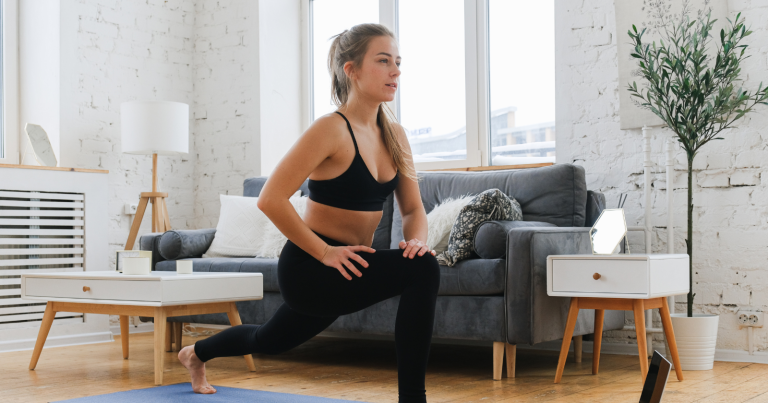How to Create a Personalized Workout Routine That Works
Creating a personalized workout routine tailored to your specific goals, lifestyle, and fitness level is one of the most effective ways to achieve long-term results. Unlike generic fitness plans, personalized routines take into account your individual strengths, weaknesses, and preferences, ensuring that you stay motivated and consistent. In this article, we’ll delve into how you can craft a workout routine that works for you, combining expert advice with actionable steps.
Before diving into the process, it’s important to understand why personalization is key. Many people give up on their fitness journeys because they follow routines that don’t suit their needs or schedule. A well-designed, customized workout routine not only boosts your chances of success but also reduces the risk of injury and burnout. It’s about working smarter, not harder, and aligning your fitness journey with what matters most to you.
Lastly, let’s acknowledge the mental and emotional component of fitness. A routine tailored to you can serve as a powerful confidence booster. It’s more than just sets and reps; it’s about creating a lifestyle that uplifts and empowers you. Let’s explore how you can create a workout plan that’s not only effective but also enjoyable.

Setting Your Goals: The Foundation of Any Workout Plan
Setting clear and realistic fitness goals is the first step to creating a successful workout routine. Start by determining whether your primary objective is weight loss, muscle gain, increased endurance, or overall health. Each goal requires a different approach and focus.
For weight loss, your routine should prioritize calorie-burning activities like cardio and high-intensity interval training (HIIT). Pair this with resistance training to preserve lean muscle. On the other hand, if muscle gain is your goal, focus on progressive overload with compound movements like squats, deadlifts, and bench presses.
It’s also essential to set measurable and time-bound goals. Instead of saying, “I want to lose weight,” aim for a more specific target like, “I’d like to lose 10 pounds in three months.” This provides clarity and a timeline to track progress.
Finally, remember to be flexible with your goals. Life happens, and sometimes you need to adjust your routine. Being adaptable ensures you maintain momentum, even when faced with challenges.
Assessing Your Fitness Level: Know Where You Stand
Understanding your current fitness level is crucial for designing a routine that’s challenging yet achievable. Start with a self-assessment or consider consulting a personal trainer for a professional evaluation.
A basic self-assessment includes measuring your cardiovascular endurance, muscular strength, flexibility, and body composition. For example, how long can you hold a plank? How far can you jog without stopping? These metrics provide a starting point to track improvement over time.
Use tools like fitness apps or wearable devices to gather data on your daily activity levels. This information helps identify patterns and areas for improvement, such as increasing your step count or dedicating more time to mobility exercises.
Additionally, take note of any physical limitations or injuries. Acknowledge these factors to avoid exacerbating existing conditions. Customizing your routine around these considerations ensures safety and sustainability.
Crafting Your Weekly Workout Schedule: Balance and Variety
A well-rounded workout schedule includes a mix of cardio, strength training, and recovery. The key is to strike a balance that suits your goals and fits your weekly availability.
Start by allocating specific days for different types of workouts. For instance, you might dedicate Mondays, Wednesdays, and Fridays to strength training, while Tuesdays and Thursdays focus on cardio. Reserve the weekend for active recovery, such as yoga or a leisurely hike.
Incorporate variety to keep your routine engaging. Instead of running on the treadmill every cardio day, alternate with cycling, swimming, or dance classes. Variety prevents boredom and challenges different muscle groups, leading to better overall fitness.
Consistency is more important than intensity when starting out. Aim for shorter, high-quality sessions rather than long, exhausting workouts. Gradually increase the duration and intensity as your fitness improves.
Tools and Resources: Enhancing Your Workout Plan
Leveraging tools and resources can simplify your fitness journey and maximize results. Apps like MyFitnessPal, Strava, and Fitbod provide workout suggestions, track progress, and offer motivational features.
Invest in basic fitness equipment if you prefer working out at home. Dumbbells, resistance bands, and a yoga mat are versatile tools that can cater to a wide range of exercises. For gym-goers, familiarize yourself with equipment like cable machines and free weights to diversify your training.
Use online calculators to determine your calorie needs and ideal macronutrient ratios based on your goals. This ensures your diet aligns with your fitness routine for optimal results.
Additionally, seek inspiration from fitness influencers or bloggers who share routines and tips. However, be cautious and verify their credentials to ensure their advice is evidence-based.
Learning from the Experts: Insights from Personal Trainers
To provide expert insights, I interviewed certified personal trainer Lisa Carter, who has over a decade of experience in crafting personalized routines. She emphasizes the importance of progressive overload and recovery.
“One mistake people often make is doing the same exercises week after week without increasing intensity,” Lisa explains. “To see progress, you need to challenge your muscles by increasing weight, reps, or sets over time.”
Lisa also highlights the value of recovery days. “Rest is when your muscles repair and grow stronger. Overtraining can lead to burnout and injuries, so always listen to your body.”
To make routines enjoyable, Lisa suggests incorporating activities you genuinely love. “If you hate running, don’t force yourself to run. Find alternatives like rowing or brisk walking that achieve similar results.”
Conclusion: Building a Sustainable Routine
Creating a personalized workout routine is an ongoing process of experimentation and adjustment. By setting clear goals, assessing your fitness level, and incorporating expert advice, you’ll develop a plan that aligns with your lifestyle and aspirations.
Remember, consistency and enjoyment are key—fitness should enhance your life, not feel like a chore. Start small, stay committed, and celebrate every milestone along the way. Your journey to a healthier, stronger you begins with a plan that’s uniquely yours.





